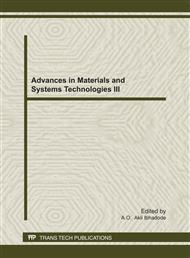p.611
p.619
p.627
p.639
p.647
p.653
p.667
p.677
p.685
Development of a Heuristics Model for Simplifying a Multi-Channel Queuing System
Abstract:
Queuing model has been discussed widely in literature. The structures of queuing systems are broadly divided into three namely; single, multi-channel, and mixed. Equations for solving these queuing problems vary in complexity. The most complex of them is the multi-channel queuing problem. A heuristically simplified equation based on relative comparison, using proportionality principle, of the measured effectiveness from the single and multi-channel models seems promising in solving this complex problem. In this study, six different queuing models were used from which five of them are single-channel systems while the balance is multi-channel. Equations for solving these models were identified based on their properties. Queuing models’ performance parameters were measured using relative proportionality principle from which complexity of multi-channel system was transformed to a simple linear relation of the form = . This showed that the performance obtained from single channel model has a linear relationship with corresponding to multi-channel, and is a factor which varies with the structure of queuing system. The model was tested with practical data collected on the arrival and departure of customers from a cocoa processing factory. The performances obtained based on average number of customers on line , average number of customers in the system , average waiting time in line and average waiting time in the system, under certain conditions showed no significant difference between using heuristics and analytical models.
Info:
Periodical:
Pages:
647-652
Citation:
Online since:
October 2011
Authors:
Keywords:
Price:
Сopyright:
© 2012 Trans Tech Publications Ltd. All Rights Reserved
Share:
Citation:


